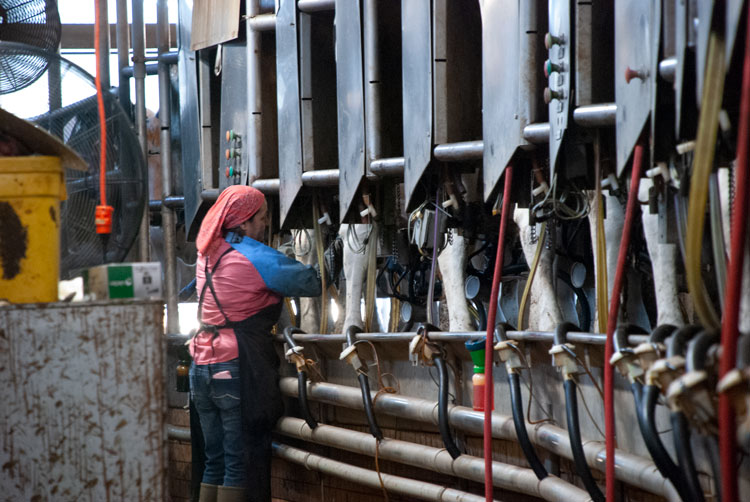
Coronavirus precautions have vastly changed workplaces for both dairy farmers and their employees, an important part of the nation’s critical infrastructure. Farmers are proactively implementing workforce best practices during the pandemic and learning lessons from other sectors.
Meanwhile, evolving government guidance is informing dairy industry decisions. Although much remains unknown about COVID-19 and its effects, protecting dairy employees remains essential.
Dairy’s action steps
Dairy farmers nationwide are taking the initiative to protect workers, with producers adjusting their operations and developing protocols to mitigate risk and prevent and control the spread of coronavirus. Among the changes:
- Farmers are ensuring access to personal protective equipment (PPE) and engaging in practices to keep workers safely distanced from others by enacting social distancing policies and eliminating nonessential farm visits while making changes to break rooms, employer-provided housing, and shared transportation.
- Managers are training employees in coronavirus precautionary protocols, promoting virus-killing hygiene, increasing sanitation practices and procedures, and regularly updating posted notices and information around the farm to keep materials current and employees informed.
- Some producers are maintaining regular, socially distant communication to provide updates to their workforce through group chats and virtual meetings, staggering breaks, and even coordinating grocery deliveries to reduce the risk of coronavirus exposure.
As seen in other sectors that have dealt with well-publicized outbreaks, early detection and open communication are crucial to managing an outbreak. Management that’s unapproachable and inconsistent in responding to employees who test positive or are exposed to COVID-19 may jeopardize the health of employees, their families, and the community. Dairy farmers who have not already done so need to craft action plans that integrate government guidance and industry best practices for both preventing coronavirus on their farm and for managing a case, should one arise.
Resources to help
The Department of Labor’s Occupational Safety and Health Administration (OSHA), the Centers for Disease Control and Prevention (CDC), and the Food and Drug Administration (FDA) are providing information to employers on how to protect employee health as they navigate COVID-19. Recent guidance specific to agriculture includes FDA’s Use of Respirators, Facemasks, and Cloth Face Coverings in the Food and Agriculture Sector During Coronavirus Disease Pandemic and CDC’s Interim Guidance for Agriculture Workers and Employers and Agricultural Employer Checklist for Creating a COVID-19 Assessment and Control Plan.
The National Milk Producers Federation (NMPF) also has created several resources, including a Dairy Farmer Handbook on Coronavirus Prevention and Management (available in Spanish) and Recommended Protocols for Dairy Farms When an Employee Tests Positive for COVID-19, to help dairy farmers design action plans tailored specifically to their operations. The documents combine government guidance with dairy expertise, helping farmers craft effective plans. More COVID-19 resources for dairy can be found on NMPF’s coronavirus resource page.
Americans have been upended since March, with more challenges expected in the months ahead. Uncertainty will continue to revolve around COVID-19 for the rest of the year. But regardless of how guidance may evolve, the dairy sector will continue to respond proactively to protect its workforce. That has not, and will not, change.





